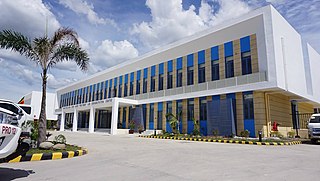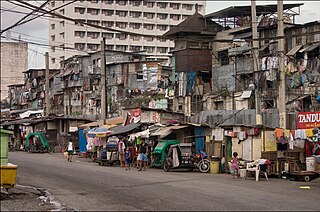Related Research Articles

Violence is often defined as the use of physical force or power by humans to cause harm and degradation to other living beings, such as humiliation, pain, injury, disablement, damage to property and ultimately death, as well as destruction to a society's living environment. The World Health Organization (WHO) defines violence as "the intentional use of physical force or power, threatened or actual, against oneself, another person, or against a group or community, which either results in or has a high likelihood of resulting in injury, death, psychological harm, maldevelopment, or deprivation." There is growing recognition among researchers and practitioners of the need to include violence that does not necessarily result in injury or death.

Sex tourism is the practice of traveling to foreign countries, often on a different continent, with the intention of engaging in sexual activity or relationships, in exchange providing money or lifestyle support. This practice predominantly operates in countries where sex work is legal. The World Tourism Organization of the United Nations has acknowledged that this industry is organized both within and outside the structured laws and networks created by them.

Street children are poor or homeless children who live on the streets of a city, town, or village. Homeless youth are often called street kids, or urchins; the definition of street children is contested, but many practitioners and policymakers use UNICEF's concept of boys and girls, aged under 18 years, for whom "the street" has become home and/or their source of livelihood, and who are inadequately protected or supervised. Street girls are sometimes called gamines, a term that is also used for Colombian street children of either sex.
Drugs and prostitution have been documented to have a direct correlation.

Trafficking of children is a form of human trafficking and is defined by the United Nations as the "recruitment, transportation, harboring, and/or receipt" kidnapping of a child for the purpose of slavery, forced labour, and exploitation. This definition is substantially wider than the same document's definition of "trafficking in persons". Children may also be trafficked for adoption. Not all adoption is a form of human trafficking, but illegal adoption is. Illegal adoptions violate multiple child rights norms and principles, including the best interests of the child, the principle of subsidiarity and the prohibition of improper financial gain.

Child poverty refers to the state of children living in poverty and applies to children from poor families and orphans being raised with limited or no state resources. UNICEF estimates that 356 million children live in extreme poverty. It is estimated that 1 billion children lack at least one essential necessity such as housing, regular food, or clean water. Children are more than twice as likely to live in poverty as adults and the poorest children are twice as likely to die before the age of 5 compared to their wealthier peers.

Out of 10,000 people in the United States, 20 are homeless with 38% identifying as women. This is a 12.1% increase in homelessness amongst women since 2022. Although studies reflect that circumstances vary depending on each individual, the average homeless woman is 35 years old, has children, is a member of a minority community, and has experienced homelessness more than once in their lifetime.

A residential treatment center (RTC), sometimes called a rehab, is a live-in health care facility providing therapy for substance use disorders, mental illness, or other behavioral problems. Residential treatment may be considered the "last-ditch" approach to treating abnormal psychology or psychopathology.

Socioeconomic status (SES) is an economic and sociological combined total measure of a person's work experience and of an individual's or family's access to economic resources and social position in relation to others. When analyzing a family's SES, the household income and the education and occupations of its members are examined, whereas for an individual's SES only their own attributes are assessed. Recently, research has revealed a lesser-recognized attribute of SES as perceived financial stress, as it defines the "balance between income and necessary expenses". Perceived financial stress can be tested by deciphering whether a person at the end of each month has more than enough, just enough, or not enough money or resources. However, SES is more commonly used to depict an economic difference in society as a whole.

The phenomenon of street children in the Philippines was first attested in the 1980s. As of 2021 the number of street children in the Philippines is estimated at around 250,000.
Prostitution in Honduras is currently legal, as there is no law prohibiting prostitution. Although similar institutions such as brothel ownership and pimping are illegal in Honduras, prostitution has remained largely unchecked by the government. UNAIDS estimate there to be 22,771 prostitutes in the country.
Social cleansing is social group-based killing that consists of the elimination of members of society who are considered "undesirable", including, but not limited to, the homeless, criminals, street children, the elderly, the poor, the weak, the sick, the needy and the disabled. This phenomenon is caused by a combination of economic and social factors, but killings are notably present in regions with high levels of poverty and disparities of wealth. Perpetrators are usually of the same community as the victims and they are often motivated by the idea that the victims are a drain on the resources of society. Efforts by national and local governments to stop these killings have been largely ineffective. The government and police forces are often involved in the killings, especially in Africa, Asia, and South America.
Survival sex is a form of prostitution engaged in by people because of their extreme need. It can include trading sex for food, a place to sleep, or other basic needs; it can also be used to obtain addictive drugs. Survival sex is engaged in by homeless people, refugees, asylum seekers, and others disadvantaged in society.

A street child is a child "for whom the street has become his or her habitual abode and/or source of livelihood; and who is inadequately protected, supervised, or directed by responsible adults".
Street children or orphans in some Eastern European countries face problems such as malnutrition, HIV, lack of resources, victimization though child sex tourism, social stigmatization and discrimination.

In a study in Western societies, homeless people have a higher prevalence of mental illness when compared to the general population. They also are more likely to suffer from alcoholism and drug dependency. A 2009 US study, estimated that 20–25% of homeless people, compared with 6% of the non-homeless, have severe mental illness. Others estimate that up to one-third of the homeless have a mental illness. In January 2015, the most extensive survey ever undertaken found 564,708 people were homeless on a given night in the United States. Depending on the age group in question and how homelessness is defined, the consensus estimate as of 2014 was that, at minimum, 25% of the American homeless—140,000 individuals—were seriously mentally ill at any given point in time. 45% percent of the homeless—250,000 individuals—had any mental illness. More would be labeled homeless if these were annual counts rather than point-in-time counts.

The incarceration of women in the United States refers to the imprisonment of women in both prisons and jails in the United States. There are approximately 219,000 incarcerated women in the US according to a November 2018 report by the Prison Policy Initiative, and the rate of incarceration of women in the United States is at a historic and global high, with 133 women in correctional facilities per every 100,000 female citizens. The United States is home to just 4% of the world's female population, yet the US is responsible for 33% of the entire world's incarcerated female population. The steep rise in the population of incarcerated women in the US is linked to the complex history of the war on drugs and the US's prison–industrial complex, which lead to mass incarceration among many demographics, but had particularly dramatic impacts on women and especially women of color. However, women made up only 10.4% of the US prison and jail population, as of 2015.

Youth homelessness is the problem of homelessness or housing insecurity amongst young people around the globe, extending beyond the absence of physical housing in most definitions and capturing familial instability, poor housing conditions, or future uncertainty. Youth Homelessness affects people globally, transcending borders. Policies to alleviate this challenge have been implemented in nations across the world, yet the challenge of keeping young people off the streets persists. Foundational struggles involving addiction, familial unrest, or abuse often lead to young people choosing to leave or being forced out of their homes before they are adequately prepared to be on their own.
Human Trafficking or "trafficking in persons" is the recruiting, harboring, transporting, providing, or obtaining a person for mainly the purposes of forced labor or prostitution. Other reasons for human trafficking are the removal of organs, forced marriage, and other exploitations. South America is one of the biggest source and destination locations in the world and has struggled with the issue for many years. The ILO estimates that of the 20.9 million victims of human trafficking in 2012, 1.8 million were from Latin America. There are many factors that cause human trafficking, like a high demand for domestic servants, sex laborers, and factory workers, the existence of already established trafficking networks that often take advantage of young women and children, corruption in the governments and local law enforcement agencies, a governmental disinterest in the issue and a lack of opportunity for women in South American regions where trafficking occurs. People exploited in human trafficking are often impoverished, members of indigenous peoples, unemployed, victims of abuse, illiterate, substance users, homeless, or involved in gang activity. Research by the United States Department of State has also found that LGBTQ+ people are vulnerable to human trafficking. By far, sex trafficking is the leading type of human trafficking, making up 79 percent of all human trafficking. This is then followed by forced labor at 18 percent. About 20 percent of trafficking victims are children. Primary destinations for trafficking and illegal immigration are the United States, Spain, Britain, Italy, the Netherlands, Portugal, and Canada. Globalization, capitalism and societal attitudes facilitate and reduce the barriers to human trafficking.
The United Nations defines human trafficking as "the recruitment, transport, transfer, harbouring or receipt of a person by such means as threat or use of force or other forms of coercion." Declared a global human rights crisis, human trafficking is the third-largest source of worldwide criminal activity. Although the UN has developed a range of methods to collect reliable data regarding human trafficking, uniform information is scarce. According to the Walk Free Foundation, 40.3 million people live in modern slavery. Whereas, according to the U.S. Department of State, this number is closer to 24.9 million. Because of the absence of a standard definition of human trafficking across agencies and countries and the hidden nature of the crime, there are gaps in data and challenges to identify victims. These gaps are visible when looking at data regarding the LGBTQI+ community. Although recent studies have shown that individuals who identify with the community are especially vulnerable to human trafficking due to the stigma and discrimination against them, there is very little data making them an underreported population. The limited amount of data available on LGBTQI+ and trafficking has come from North America and, to a lesser extent, Europe and Latin America.
References
- Scanlon TJ, Tomkins A, Lynch MA, Scanlon F (1998). "Street children in Latin America," BMJ, 316 (1596–1600).
- Oritz de Carrizosa, S. and Poertner, J (1992). "Latin American street children: problem, programmes and critique," International Social Work, 35 (405).
- Ennew, J (1986). "Children of the streets," New Internationalist, 164 (10–11).
- Rizzini, I (1996). "Street children: An excluded generation in Latin America," Childhood: A Global Journal of Child Research, 3 (215–233).
- Rizzini I and Lusk M (1995). "Children in the Streets: Latin America’s Lost Generation," Children and Youth Services Review, 17 (391–400).
- Aptekar, L (1994). "Street Children in the Developing World: A Review of Their Condition," Cross-Cultural Research, 28 (195–224)
- Tacon, P (1982). "Carlinhos: The hard gloss of city polish," UNICEF News, 111 (4–6).
- Lusk M, Peralta F and Vest G (1989). "Street children of Juarez: A Field Study," International Social Work, 32 (289)
- Campos R, et al. (1994). "Social Networks and Daily Activities of Street Youth in Belo Horizonte, Brazil," Child Development, 65 (319–330).
- Lalor, K (1999). "Street children: a comparative perspective," Child abuse and neglect, 23 (759–770).
- Raffaelli, M (1999). "Homeless and Working Street Youth in Latin America: A Developmental Review," Interamerican Journal of Psychology, 33 (7–28).
- De Oliveira W, Balzerman M, Pellet L (1992). "Street children in Brazil and their helpers: comparative views on aspirations and the future," International Social Work, 35 (163–176).
- Ennew, J (1994). “Parentless Friends: A Cross-Cultural Examination of Networks Among Street Children and Street Youth,” Social Networks and Social Support in Child- hood and Adolescence, 24 (409–410).
- Wright, James D (1993). "Street children in North and Latin America: Preliminary data from proyectos alternativos in Tegucigalpa and some comparisons with the U.S. case," Studies in Comparative International Development, 28 (81–92).
- Tyler F., Tyler S., Echeverry J. and Zea. M (1991). "Making it on the streets of Bogota: A psychosocial study of street youth," Genetic, Social, and General Psychology Monographs, 119 (395–417).
- Collymore, Yvette (2002). "Migrant street children on the rise in Central America," Population Reference Bureau
- Velasquez, Manuel (2011). "H. B. Fuller and the Street Children of Central America," Business Ethics: Concepts and Cases
- Ferguson, Kristin (2002). "Intra-Regional Assessment of the Structural Influences of the Street-Children Phenomenon in Latin America: The Case of Brazil and Mexico," Social Development Issues, 24 (23–32).
- Huang CC, Barreda P, Mendoza V, Guzman L, and Gilbert P (2004). "A comparative analysis of abandoned street children and formerly abandoned street children in La Paz, Bolivia," Arch Dis Child, 89 (821–826).
- Gustafsson-Wright E and Pyne H (2002). "Gender Dimensions of Child Labor and Street Children in Brazil," World Bank Policy Research Working Paper No. 2897